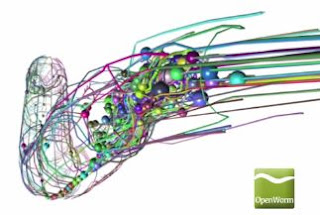“Isn’t it true,” he asks, “ that Darwin preserved a piece of vermicelli in a glass case, until by some extraordinary means it actually began to move with a voluntary motion?”“Are you speaking of the worm,” asks Dr. Frankenstein snidely, hoping to crush the inquisitor with sarcasm, “or the spaghetti?”
- Young Frankenstein
The empirical and the computational are coming together in the OpenWorm Project. how easily and effectively can something as simple as a roundworm be modeled?
OpenWorm aims to build the first comprehensive computational model of the Caenorhabditis elegans (C. elegans), a microscopic roundworm. With only a thousand cells, it solves basic problems such as feeding, mate-finding and predator avoidance. Despite being extremely well studied in biology, this organism still eludes a deep, principled understanding of its biology. [emphasis mine]
A deep, principled understanding of a creature's biology would certainly be nice to have.



